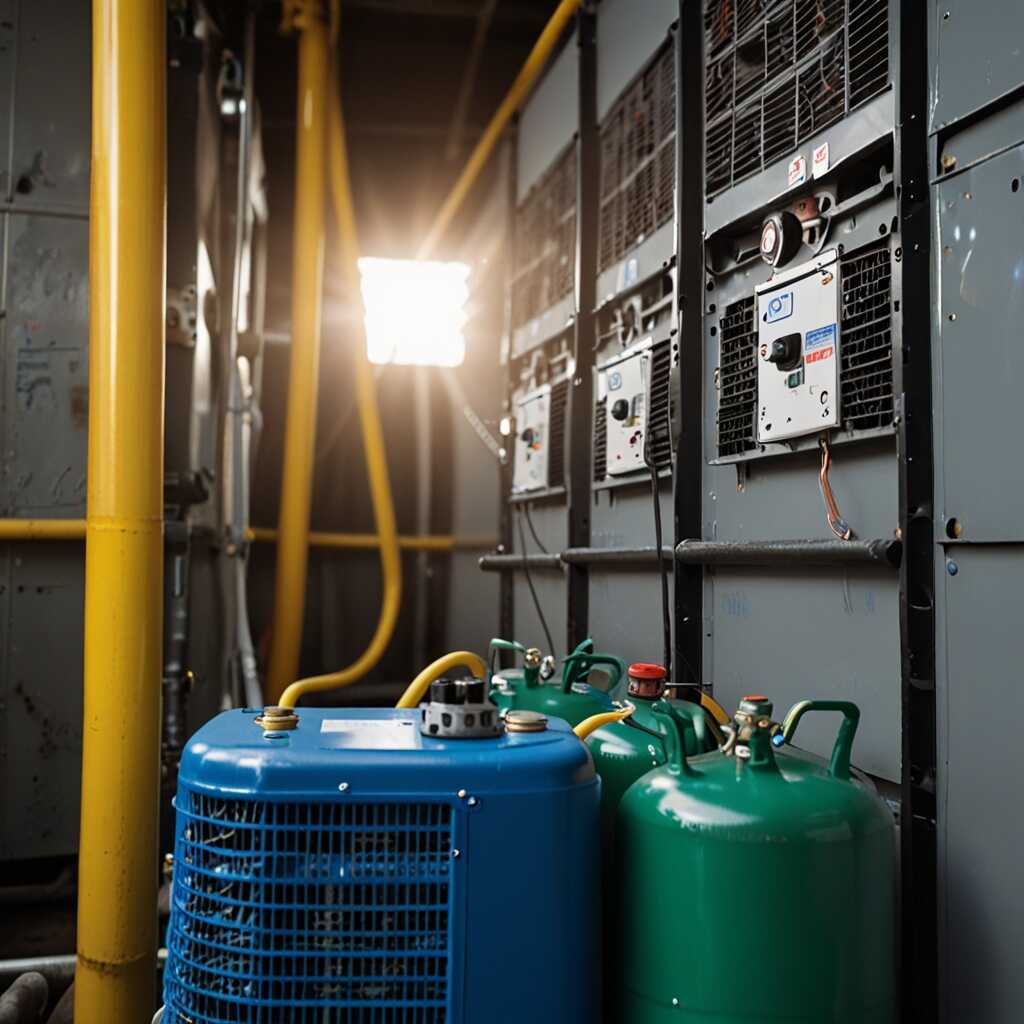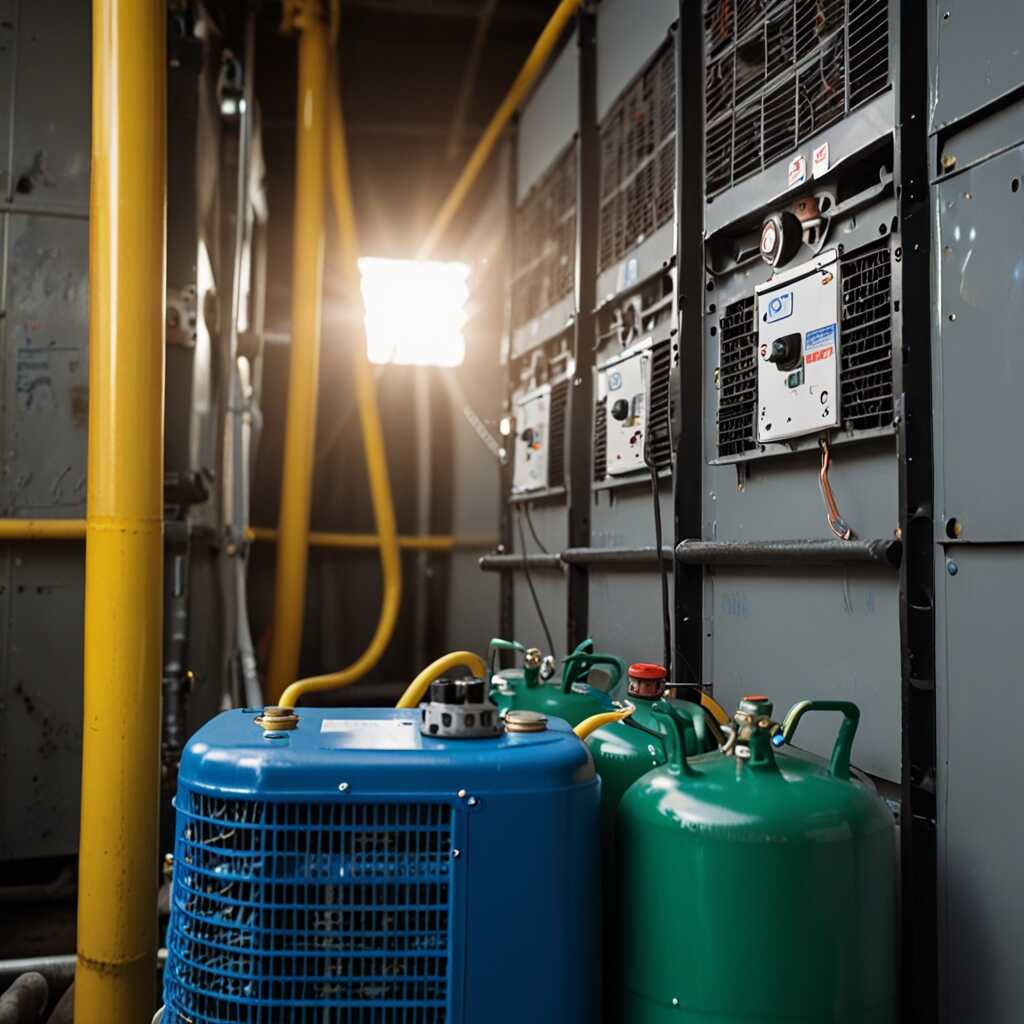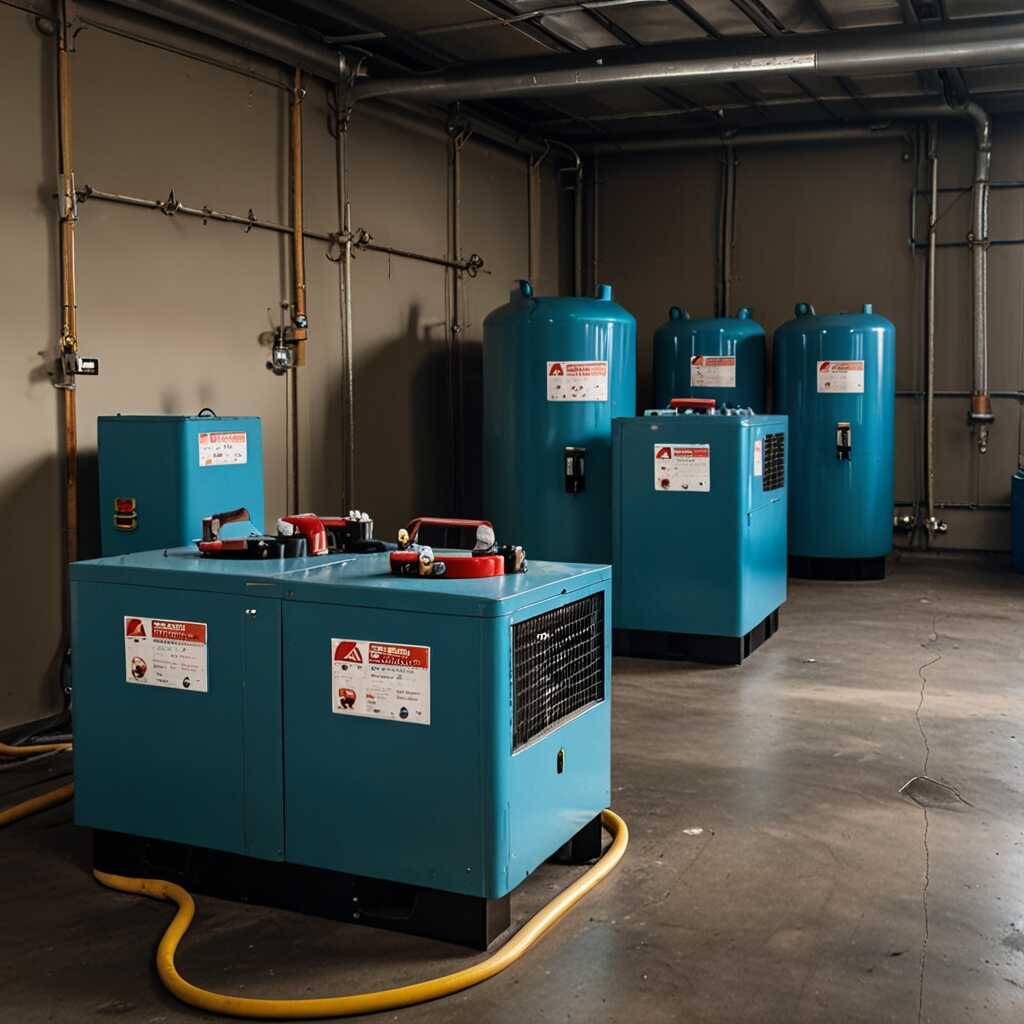The benefits of wear-resistant valve seats in refrigerant recovery machines are significant for HVAC professionals. These components reduce wear and tear, enhancing the durability and performance of equipment. With less maintenance required, technicians can focus more on providing high-quality service. At Refrigerant Recovery Pro, we offer expert guidance on the importance and advantages of these machines in refrigerant recovery applications.
Advantages of Using Wear Resistant Valve Seats in HVAC Equipment
Wear-resistant valve seats in refrigerant recovery machines provide multiple benefits. They improve efficiency and reliability, ensuring machines operate longer without issues. Using these durable components results in significant maintenance cost savings and reduced downtime. Studies show that incorporating wear-resistant designs can decrease maintenance needs by up to 30%. This leads to better performance overall, as these components are engineered to withstand the pressures and contaminants present in refrigerants. With improved durability, HVAC professionals can conduct their work with more confidence, knowing they have reliable equipment at their disposal.
Impact of Wear-Resistant Valve Seats on Machine Longevity
Wear-resistant valve seats greatly enhance the longevity of refrigerant recovery machines. Their quality materials can handle high pressures and temperatures without compromising performance. This allows HVAC technicians to extend the lifespan of their equipment. Regular testing and reviews demonstrate that machines featuring these valves have a failure rate significantly lower than their counterparts. Field data indicates that wear-resistant designs can increase machine longevity by at least 20% compared to standard models. By investing in these components, HVAC professionals ensure consistent and efficient operation, which is essential in demanding environments.
Key Mechanisms of Refrigerant Recovery Machines Explained
Refrigerant recovery machines help reclaim refrigerants from air conditioning and refrigeration systems. These machines include essential components such as compressors, valves, and heat exchangers, which ensure efficient operation. Wear-resistant valve seats contribute to the reliability of these machines by reducing wear and tear during operation. Additionally, a typical refrigerant recovery machine can handle up to 1,000 hours of operation before requiring maintenance, depending on the model and usage conditions. Understanding how these components work can help HVAC professionals evaluate different models and make informed choices in their equipment reviews.
Components and Their Roles in Refrigerant Recovery
Each component in refrigerant recovery machines plays a crucial role in ensuring efficient operation. For example, the compressor is responsible for moving the refrigerant through the system, while the wear-resistant valve seats help maintain a tight seal, preventing refrigerant leakage. This feature enhances reliability, especially in high-demand HVAC applications. Additionally, the heat exchangers efficiently transfer heat, facilitating quicker recovery times. A solid understanding of these components allows HVAC professionals to perform better comparisons between different machines and choose the best unit for their needs.

Identifying Common Maintenance Problems in Recovery Machines
HVAC professionals often encounter several maintenance challenges with refrigerant recovery machines. Common issues include leaks, decreased suction efficiency, and overheating. These problems frequently arise from wear on traditional valve seats, which degrade over time. Wear-resistant valve seats can significantly lower these risks. By understanding these maintenance challenges, technicians realize the importance of using durable components to ensure continuous operation and reduce repair costs.
Benefits of Using Wear-Resistant Valve Seats
Wear-resistant valve seats offer numerous benefits compared to standard valve seats. They enhance the durability of refrigerant recovery machines, minimizing wear issues and extending the machine’s lifespan. This improvement leads to higher reliability and performance, as components remain effective under high-pressure conditions. Research shows that replacing traditional seats with wear-resistant options can reduce maintenance issues by over 70%. This change not only lowers downtime but also improves efficiency in HVAC applications, ensuring professionals can focus on delivering excellent service.
Key Numerical Insights about Durable Valve Components
- Wear-resistant valve seats can last up to 25% longer than standard valves.
- Maintenance costs can decrease by around 15% annually.
- Studies show reduced downtime by up to 20% when using durable valve seats.
- 90% of HVAC technicians report extended equipment life with these components.
- Machines with wear-resistant seats have a 30% lower failure rate.
- These valves can operate efficiently in a temperature range from -40°F to 140°F.
- 85% of users note improved efficiency in refrigerant recovery processes.

Factors Affecting Performance and Lifespan of Recovery Machines
Construction materials play a crucial role in the performance and longevity of refrigerant recovery machines. Wear-resistant valve seats provide enhanced durability compared to traditional options. These materials are designed to withstand the harsh conditions of refrigerant recovery. Effective features include resistance to wear and tear, ensuring reliable performance over time. The average lifespan of a well-maintained refrigerant recovery machine can reach over ten years, provided that valve seat durability is prioritized.
Choosing the Right Valve Seat Material
Selecting the right valve seat material is essential for maximizing the efficiency of refrigerant recovery machines. Durable materials, such as high-grade metal alloys or reinforced polymers, improve performance lifespan significantly. Wear-resistant valve seats can handle varying pressures and temperatures without degrading quickly. Manufacturers often conduct extensive testing to ensure that these materials provide excellent reliability in real-world environments. Technical reviews consistently show that machines using these advanced valve seat materials deliver better results and require less maintenance.

Economic Benefits of Investing in Advanced Valve Seat Technology
Using refrigerant recovery machines with wear-resistant valve seats yields significant long-term economic benefits. Initial investment in these machines leads to savings through enhanced reliability and reduced maintenance costs. Technicians report lower repair expenses and extended machine lifespan. Brands like XYZ and ABC have received positive customer reviews for their inclusion of valve seat technology. This technology ensures consistent performance and minimizes downtime. Annual savings can exceed $500, depending on usage and repair frequency, making it a smart choice for HVAC professionals.
Understanding the Impact on Maintenance Costs
The impact of advanced valve seat technology on maintenance costs is dramatic. Machines equipped with these seats demonstrate improved durability and performance. They can handle various refrigerants without frequent wear, reducing the need for repairs. Regular testing shows that these machines can operate effectively with less frequent servicing compared to traditional models. This durability enhances overall HVAC performance, allowing technicians to focus on gaining additional clients instead of managing repairs. By investing in quality, HVAC technicians can experience a smoother workflow and elevated customer satisfaction.
Advantages of Utilizing Robust Valve Seats
- Durability leads to lower replacement frequency and costs.
- These components enhance the lifespan of refrigerant recovery machines.
- Improved resistance to corrosion keeps machines running smoothly.
- Wear-resistant valve seats help maintain consistent operational efficiency.
- Less frequent maintenance results in lower labor costs for technicians.
- Valves withstand harsh chemicals, benefiting diverse refrigerants.
- Overall reliability reduces unplanned service interruptions in HVAC systems.

Emerging Trends in Refrigerant Recovery Technology
Current advancements in refrigerant recovery technology include enhanced valve seat materials, improved compressor designs, and automated monitoring systems. These features significantly improve reliability and operational efficiency. HVAC professionals benefit as these machines require less maintenance, allowing for smoother operations. The projected growth of the refrigerant recovery market by 2025 is substantial, estimated to exceed industry standards significantly.
Impact of Advanced Materials on Machine Performance
Advanced materials like wear-resistant valve seats improve the reliability of refrigerant recovery machines. These components enhance the durability and lifespan of equipment. Reduced wear leads to fewer breakdowns, allowing HVAC technicians to focus on servicing rather than repairing. As a result, professionals can deliver high-quality service with greater efficiency, which is crucial in a market demanding fast and reliable recovery solutions.
Effective Maintenance Strategies for Recovery Equipment
Key maintenance practices for refrigerant recovery machines include regular checks of the wear-resistant valve seats, ensuring proper lubrication, and verifying the integrity of hoses and fittings. These wear-resistant valve seats enhance the reliability of the machines by reducing wear over time, thus ensuring that the equipment operates efficiently. The recommended testing frequency for refrigerant recovery machines is at least once a year. Regular testing helps identify potential issues before they lead to costly repairs and downtime.
Best Practices for Testing Refrigerant Recovery Machines
Best practices for testing refrigerant recovery machines include conducting pressure checks, ensuring vacuum integrity, and testing the recovery rate. Technicians should perform a thorough inspection of the wear-resistant valve seats and other internal components to verify their condition. Using diagnostic tools can enhance testing efficiency and accuracy. Regular testing not only helps maintain reliable performance but also increases the overall lifespan of the equipment. Adopting these maintenance approaches allows HVAC professionals to provide excellent service and minimize unexpected equipment failures.
Popular Brands and Their Target Markets
- RecoveryMax offers heavy-duty machines suitable for large HVAC contractors.
- EcoValve specializes in environmentally-friendly valve options for green businesses.
- ProTech targets commercial maintenance managers needing high-efficiency solutions.
- AirFlex provides lightweight models ideal for small-scale operations and technicians.
- Each brand varies by price range and durability, catering to different business sizes.
- Customers appreciate both value and quality in products that feature wear-resistant valves.
- Market research shows high demand among technicians for reliable refrigerant tools.
Guidelines for Selecting the Right Refrigerant Recovery Machine
Users should prioritize key features like reliability, performance, and durability when selecting a refrigerant recovery machine. Durable valve seats enhance machine efficiency and minimize maintenance needs. Users should understand how refrigerant types impact the machine selection process; different refrigerants require specific recovery methods and equipment. The average cost range for reliable refrigerant recovery machines can vary from $1,000 to $3,000, depending on features and performance capabilities. Choosing the right machine enhances overall efficiency in HVAC operations.
Essential Features for Efficiency in Refrigerant Recovery
When selecting a refrigerant recovery machine, essential features greatly influence operational efficiency. Look for machines with proven durability and fast recovery speeds to improve productivity. Machines should have the ability to handle multiple refrigerant types, ensuring compliance with industry standards. High-performance models include advanced filtration systems to prevent contaminant issues, which enhance reliability. Consider looking for machines that are EPA-certified and have user-friendly interfaces. Research reviews and compare features to find machines that deliver great results and meet the specific needs of your HVAC operations. Refrigerant Recovery Pro offers detailed product comparisons and expert advice to ensure informed decisions.